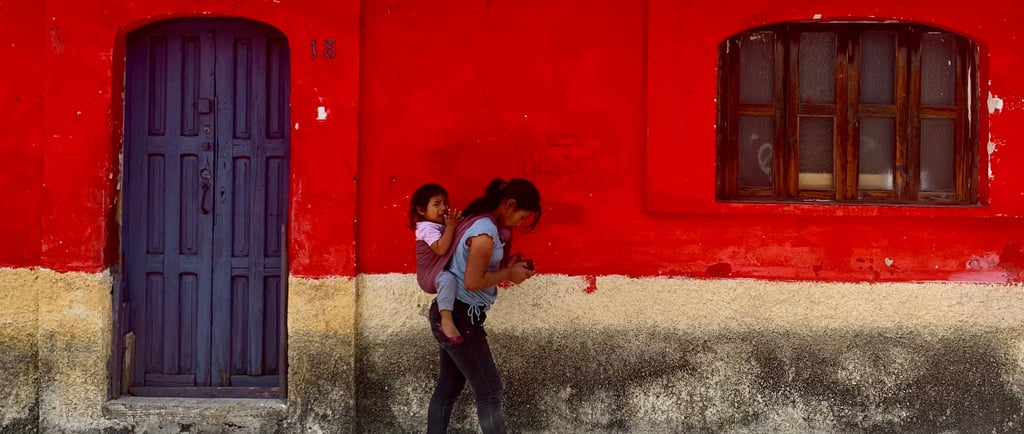Things to Know Before You Go to Chiapas, Mexico


Chiapas Should Be on Your Radar
The state of Chiapas is located in the southernmost part of Mexico, bordering Guatemala and has a current population of ~5.6 million. A good place to base yourself for exploring the region is in the beautiful and magical town of San Cristóbal de las Casas.
Chiapas has a lot to offer to visitors, including an interesting revolutionary historical backdrop, ancient Mayan ruins nestled in the jungle, incredible waterfalls and lakes, and the spectacular Sumidero Canyon which is home to crocodiles and spider monkeys.
Chiapas has also maintained a rich Indigenous cultural heritage. Indigenous groups living in Chiapas did not experience the same level of assimilation as those living in more northern states of Mexico. Many of these Indigenous groups have maintained their cultures, traditions and languages, with the most prominent Indigenous groups in the state being the Tzotzil, Tzeltal, and Chol.
Check out the Wander Yonder YouTube video embedded below this blog for an overview of Chiapas, including its history and highlights of the best things to do in the area.
Chiapas is Home to the Revolutionary Zapatista Movement
Many people from oppressed Indigenous groups in Chiapas, such as the Tzotzil, Tzeltal, and Chol organized themselves into the Zapatista Army of National Liberation and staged an armed revolt on January 1, 1994, seizing control of several cities, occupying government buildings, freeing political prisoners, destroying land records, and expelling landowners from their estates. Over 100 people were killed over the next 12 days during the armed conflict, mostly Indigenous rebels by Mexican authorities.
While tensions continue to exist between the Zapatistas and Mexican authorities, the insurgency has largely shifted to a peaceful political movement advocating for disenfranchised Indigenous peoples, including creating community-run schools, health clinics, and other institutions to serve poor rural communities in their territory.
Today and for over two decades through “de facto autonomy,” the Zapatistas control a highly politically fragmented area roughly the size of Belgium in the State of Chiapas. For the most part, Mexican authorities leave the Zapatistas alone to run their own affairs, though this could change at any time now and in the future.
San Cristóbal de Las Casas was the main city in Chiapas where the original armed revolt was staged in 1994. During my month-long stay here, there was always a strong military presence, including heavily armed men and women and helicopters flying overhead. While the Zapatistas are no longer physically present in this city, you will see local support for them everywhere through photos, murals, t-shirts and even toy figurines depicting faceless men and women wearing black balaclavas and red bandanas.
If you are interested in learning more about this very interesting revolutionary movement in Chiapas, check out this blog post: What About the Zapatistas Now in Chiapas?
San Cristóbal is Generally Safe for Tourists
I stayed at an Airbnb just outside the Historic Centre of San Cristóbal de las Casas and never felt unsafe during the day or at night during my month-long stay in the city. Although San Cristóbal is generally considered to be a safe city, it does experience petty crime, including purse snatching and pickpocketing. Be mindful of your belongings and surroundings at all times - and avoid doing anything that will make you a target, including wearing expensive jewellery, or flashing your expensive phone or camera in public, particularly while you are outside of the Historic Centre. Extra precaution should always be taken at night to avoid being alone on dark and empty streets.
You should also be aware that Zapatista road blocks on the way to popular tourist destinations, such as the Palenque Mayan Ruins, are common throughout the State of Chiapas. It is important to travel with a reputable tour operator with good relationships with the Indigenous locals in the area. They will know when to re-route around road blocks or pay fees to pass through them. I went with Jalapeño Tours for most of my excursions in Chiapas and was very happy with their service and professional drivers.
San Cristóbal is Located at High Altitude
San Cristóbal has an average altitude of about 2100 meters (7000 feet) above sea level. Upon arrival, you may experience symptoms of altitude sickness, such as shortness of breath, tightening of your chest, headache, dizziness, nausea, fatigue, problems with sleep and loss of appetite. Symptoms usually begin within 12 to 24 hours of reaching higher elevation and get better within a day or two after your body adjusts.
In higher elevations, your body needs to work harder to maintain blood oxygen levels, increasing your respiration rate and leading your body to lose water faster than at sea level. Your risk of dehydration increases significantly. Places at higher altitude also have lower humidity, compounding the risk for dehydration. Drinking more water than usual is very important to alleviate symptoms and prevent dehydration. Health experts suggest increasing your water intake by an additional 1 to 1.5 litres for a total of 3-4 litres a day.
Where to Buy Clean Drinking Water
Most people know that tap water is not safe to drink in most parts of Mexico. However, many new visitors don’t know that you can buy refillable 5, 10, and 20 litre bottles at many local tiendas (small convenient shops). There are water purification stations in almost every neighbourhood so you just need to find the one that is closest to you. Refill your bottle for a fraction of what it would cost if you continually bought smaller bottles or water. Just type in agua purificada or agua purificadora or simply purificadora into your google maps to find the nearest purification station. You will save about 75 percent on your drinking water costs and also limit your plastic waste.

